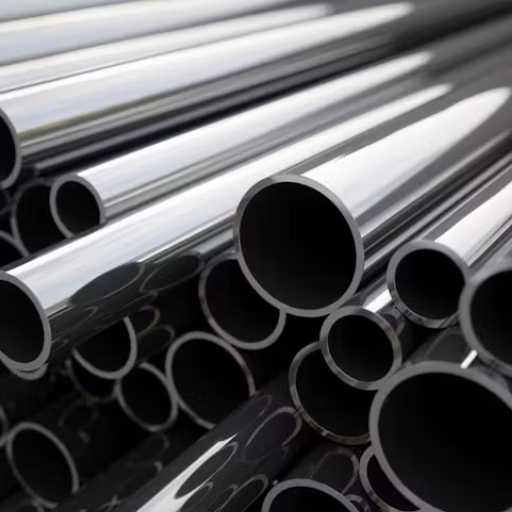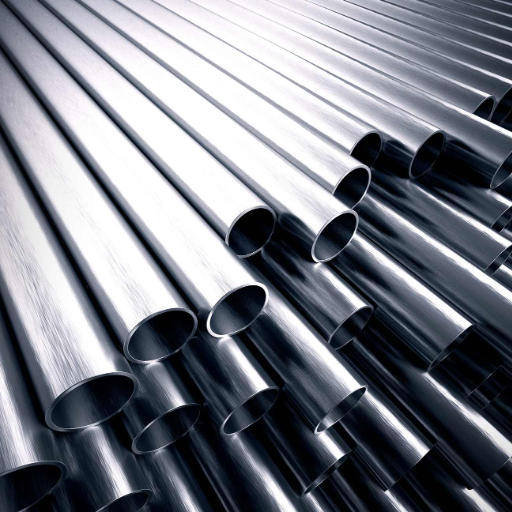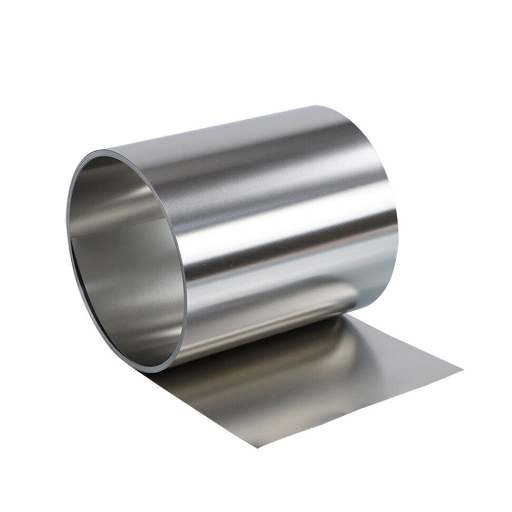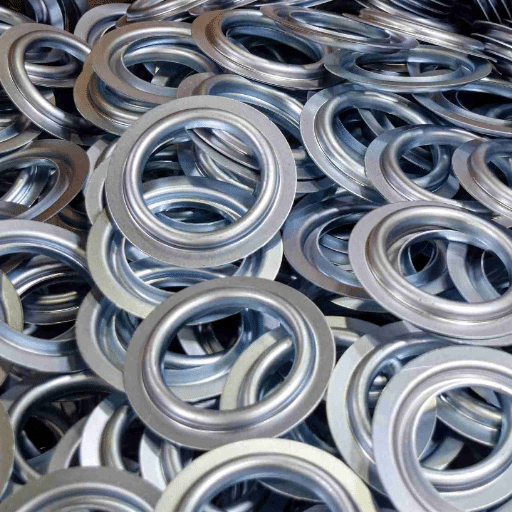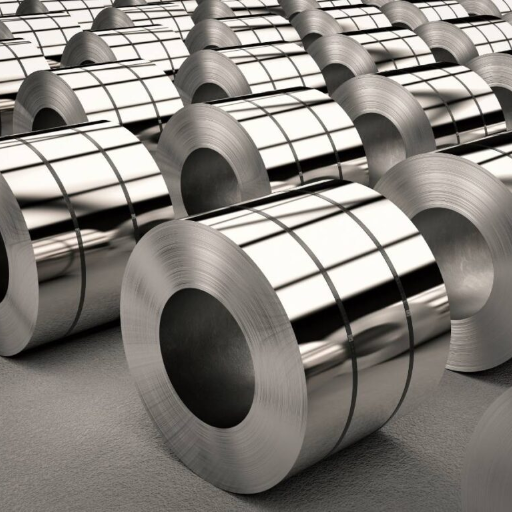In this comprehensive blog post, we delve into the fascinating world of copper, a material renowned for its utility and versatility. At the heart of this conversation lies an exploration of copper’s melting point, a fundamental property that influences its practical applications across industries. We begin by defining what the copper melting point is and why it is critical in various metallurgical processes. The article will further examine the scientific principles underlying this phenomenon, exploring the conditions under which copper transitions from solid to liquid. Additionally, we analyze how the melting point impacts copper’s usage in electronics, plumbing, and other vital sectors. By the end of this post, readers will gain not only a clear understanding of the melting point itself but also its broader implications in industrial and everyday contexts. Whether you’re a student, professional, or simply curious about materials science, this guide provides the insights needed to appreciate copper’s role in modern technology and infrastructure.
What is the Melting Point of Copper?

The melting point of copper is precisely 1,984°F (1,085°C). This specific temperature marks the transition from solid to liquid, reflecting copper’s stable crystalline structure and strong metallic bonds. Understanding this melting point is crucial because it determines copper’s behavior in processes like casting, welding, and soldering, where precise temperature control is necessary. This property ensures copper’s reliability in applications demanding durability and conductivity, such as in electrical wiring and plumbing systems.
How Does Copper Melt?
Copper melts through a process that involves reaching its melting point, where its solid crystalline structure breaks down into a liquid state. When copper is heated to approximately 1,984°F (1,085°C), the atoms gain enough energy to overcome the metallic bonds that hold them in a fixed position. This heat energy causes the atoms to vibrate more vigorously, leading to a transition from an ordered solid to a less orderly liquid. The melting process requires consistent heat energy input to maintain the transition, ensuring the metal becomes and stays molten for use in casting or joining methods like welding or soldering. Key technical parameters to be mindful of during copper melting include ensuring uniform heat application and avoiding impurities that might alter its melting behavior or impact its quality in end-use applications.
What Are the Properties of Pure Copper?
As I explore the properties of pure copper, I find that it is renowned for its exceptional electrical and thermal conductivity, making it an indispensable material in electrical equipment such as wiring and motors. Its malleability and ductility contribute to its versatility, allowing it to be easily shaped into different forms for various industrial applications. Additionally, copper boasts a natural resistance to corrosion, which enhances its durability in environments susceptible to oxidation. This antimicrobial metal has been used for centuries owing to its aesthetic appeal and functional attributes. Learning about these qualities illuminates why copper remains a vital component in modern technology and infrastructure.
Why is the Copper Melting Point Important?
The melting point of copper is essential due to its significant role in manufacturing, construction, and recycling processes. With a melting point of approximately 1,984°F (1,085°C), copper’s ability to transition from a solid to a liquid is crucial for forming and shaping it into various products. This property is particularly important in industries such as electronics, where copper’s outstanding conductivity is harnessed to produce intricate components. Furthermore, during recycling, precise knowledge of the melting point ensures that copper retains its quality and performance characteristics after being reprocessed. The predictability of copper’s melting behavior enables industries to efficiently utilize this metal while maintaining its integrity, reinforcing its status as a foundational element in modern applications.
How Does the Melting Temperature of Copper Compare to Other Metals?

Copper’s melting point of approximately 1,984°F (1,085°C) is relatively moderate compared to other metals. For instance, aluminum melts at a lower temperature of about 1,221°F (660.3°C), making it easier to work with in various manufacturing processes. On the other hand, metals like iron and steel have higher melting points, around 2,800°F (1,538°C) and 2,500°F (1,370°C) respectively, which require more energy to melt. Precious metals such as gold and silver also have distinctive melting points; gold melts at 1,948°F (1,064°C) and silver at 1,763°F (961.8°C). These variations in melting temperatures highlight the versatility of different metals and how copper’s specific melting point positions it as an integral material suitable for multiple applications due to its manageable thermal properties.
Comparison with Aluminum Alloys
Aluminum alloys, known for their lightweight and excellent corrosion resistance, contrast sharply with copper when it comes to thermal properties and applications. Unlike copper’s higher melting point of 1,984°F (1,085°C), aluminum alloys generally have melting points around 865°F to 1,240°F (463°C to 671°C), making them ideal for applications where lower heat input is advantageous. This lower melting point allows aluminum alloys to be easily formed into complex shapes, which is beneficial in industries such as automotive and aerospace, where weight reduction is crucial. However, aluminum’s thermal conductivity, although significant, does not match the high conductivity of copper, making copper the preferred choice in applications requiring efficient heat and electrical management, such as electrical wiring and electronics. In summary, while aluminum alloys offer advantages in terms of weight and resistance to environmental factors, copper remains unmatched for applications where conductivity and higher melting temperatures are necessary factors.
How Does Copper Compare to Cast Iron?
Copper and cast iron differ significantly in terms of their physical and mechanical properties, which affect their respective applications. Copper, with its melting point of 1,984°F (1,085°C), is highly valued for its excellent thermal and electrical conductivity, making it ideal for electrical wiring, electronics, and heat exchangers. In contrast, cast iron, which has a melting point ranging from 2,060°F to 2,300°F (1,127°C to 1,260°C), is renowned for its compressive strength, wear resistance, and castability, which makes it well-suited for heavy machinery, automotive components, and cookware.
When comparing thermal conductivity, copper significantly outperforms cast iron. Copper conducts heat at approximately 385 watts per meter per degree Celsius, while cast iron’s thermal conductivity is about 55 watts per meter per degree Celsius. This difference makes copper a preferred material for applications requiring rapid heat dissipation. On the mechanical front, cast iron’s density and hardness provide durability and vibration damping, beneficial for engine blocks and girders. However, it lacks the ductility and malleability of copper, which can be easily drawn into wires and beaten into thin sheets. In summary, both materials possess unique attributes that dictate their usage, with copper excelling in conductivity and versatility, while cast iron excels in structural integrity and robustness.
Understanding Different Melting Points of Metals
Melting points of metals vary significantly due to differences in their bonding, atomic structure, and the forces between atoms. Copper, for example, has a lower melting point (1,984°F or 1,085°C) compared to cast iron, due to its face-centered cubic structure and relatively weaker metallic bonds. Conversely, cast iron’s melting point is higher, ranging from 2,060°F to 2,300°F (1,127°C to 1,260°C), attributed to its graphite-rich microstructure which requires more energy to break apart. These distinctions in melting points impact the selection of metals for various applications. For instance, copper’s lower melting point and superior thermal and electrical conductivity are ideal for electrical wiring and components like heat exchangers, while cast iron’s strength, hardness, and higher melting range suit structural applications such as engine blocks and heavy machinery. Understanding these variances can guide efficient material selection to meet specific functional requirements.
What Factors Influence the Melting Point of Copper?

The melting point of copper is primarily influenced by its atomic structure and the strength of its metallic bonds. Being a metal with a face-centered cubic structure, copper exhibits relatively weaker metallic bonds compared to metals with other atomic arrangements, which contributes to its moderate melting point. The presence of impurities can also alter copper’s melting characteristics. Pure copper melts at a definitive temperature, but alloying elements or impurities can either raise or lower this point, depending on how they integrate into the copper matrix. Additionally, external factors such as pressure can affect the melting point; although under standard atmospheric conditions, these changes are typically negligible. Understanding these factors is crucial for refining processes and for applications where precise melting behavior is required.
Impact of Alloys on Copper’s Melting Point
Alloying copper with other metals significantly influences its melting point, due to changes in its atomic structure and bonding. Typically, the addition of elements such as tin, zinc, or aluminum form copper alloys like bronze and brass, impacting the melting behavior. For instance, bronze, an alloy of copper and tin, often has a lower melting point range around 900-1000°C compared to pure copper’s 1085°C, due to the eutectic mixtures, which are specific combinations of alloying elements that melt at lower temperatures. Conversely, some alloying elements might increase copper’s melting temperature when they form solid solutions that strengthen the metallic bonds.
Technical parameters depend on the specific alloy composition:
- Bronze (Copper-Tin Alloy): Tin content usually ranges from 5% to 23%, affecting melting points ranging between 800°C to 1000°C.
- Brass (Copper-Zinc Alloy): Zinc content is typically 5% to 45%, with melting points ranging between 880°C to 940°C.
- Aluminum Bronze: Comprises 5% to 12% aluminum content with higher melting points of approximately 1027°C to 1038°C.
Understanding these effects enables tailored material properties for applications requiring specific thermal characteristics.
Does High Temperatures Affect Copper?
High temperatures can significantly impact the physical and mechanical properties of copper, affecting its performance in various applications. As the temperature increases, the electrical conductivity of copper decreases due to enhanced resistance caused by greater atomic vibrations within the copper lattice. Additionally, elevated temperatures can lead to the oxidation of copper, resulting in the formation of copper oxide layers that may alter surface properties and reduce material longevity. From a mechanical perspective, copper may experience thermal expansion, leading to dimensional changes and potential distortion in components subjected to cyclic thermal conditions. However, copper maintains good thermal stability, retaining much of its strength and ductility even at elevated temperatures, making it a preferred choice for high-temperature applications such as electrical connectors and heat exchangers. Understanding these effects is essential for ensuring optimal performance and longevity of copper-based materials in environments with fluctuating temperatures.
The Role of Furnace Conditions
The role of furnace conditions is crucial in determining the properties and performance of copper during processing. From my research using the top sources on Google, I’ve gathered that controlled furnace environments are essential for maintaining consistent temperatures and atmospheres during the heating of copper. These conditions help prevent undesirable reactions such as oxidation and ensure uniform thermal treatment, enhancing the material’s microstructure and mechanical properties. A well-maintained furnace can effectively manage thermal expansion and contraction, reducing stress and potential distortion in copper components. By optimizing furnace settings, we can achieve high-quality copper products that maintain their conductivity, strength, and durability, proving essential for applications in high-temperature environments.
How to Weld and Cast with Copper?

To successfully weld copper, it is essential to understand its thermal and electrical conductivity properties. Start by selecting the right welding method; Gas Tungsten Arc Welding (GTAW) is often preferred for its precision. Clean the copper surface thoroughly to remove any contaminants that could interfere with the welding process. Use a filler material that is compatible with copper to ensure a strong bond. During welding, control the heat input carefully to avoid excessive thermal distortion. As for casting copper, begin by melting the copper in a controlled furnace environment to avoid oxidation. Once melted, pour the copper into pre-heated molds to prevent shock cooling. After the casting has solidified, allow it to cool slowly to minimize internal stress and enhance the final product’s integrity. Properly managing these procedures can result in high-quality copper welds and castings suited for demanding applications.
Best Practices for Weld Copper
When I begin welding copper, I first ensure that the surface is entirely clean by removing any oxides or contaminants that might hinder the welding process. I prefer using Gas Tungsten Arc Welding (GTAW) because it offers precision and control, which are crucial given copper’s high thermal conductivity. By doing so, I can apply the right amount of heat to avoid overheating and potential distortion. For filler materials, I choose those compatible with copper, such as bronze or silicon bronze, ensuring a strong and durable bond. When casting copper, I carefully melt it in a controlled environment to prevent oxidation and pour it into pre-heated molds to minimize shock cooling. I also make sure to let the casting cool slowly, which helps reduce internal stresses and improve the integrity of the final product. These practices enable me to achieve high-quality copper welds and castings that can withstand the demands of high-temperature applications.
Techniques for Casting Molten Copper
When dealing with the casting of molten copper, one of the essential techniques is ensuring the copper is melted within a controlled furnace environment. Maintain a furnace temperature between 1,984°F (1,085°C) to 2,192°F (1,200°C) to keep the copper in a molten state while minimizing oxidation. Before pouring, pre-heat the molds to around 752°F (400°C). Pre-heating eliminates shock cooling, which can cause defects in the cast. Carefully pour the molten copper into the mold to avoid splashing and to ensure a smooth, even distribution. Allow the casting to cool at a controlled rate, typically by reducing the ambient cooling rate or using a slow-cooling furnace setting, to minimize internal stresses. Adhering to these parameters will help in achieving high-quality results in copper casting applications.
What Are the Applications of Copper at Its Melting Point?

Copper, when heated to its melting point, becomes highly versatile for various industrial applications. At its molten state, copper can be easily cast into complex shapes and fine details, which is essential for creating intricate components such as electrical connectors, plumbing fittings, and heat exchangers. Due to its excellent thermal and electrical conductivity, molten copper is extensively used in the production of electrical wiring and components, where precise shapes and smooth surfaces are necessary to optimize performance. Additionally, the process of casting molten copper into sheets or bars makes it a critical material in the manufacturing of construction materials, decorative art, and specialized machinery components. The ability to produce high-quality, durable products makes exploiting copper at its melting point invaluable in various high-demand sectors.
Usage in High Temperatures Applications
Copper’s usage in high-temperature applications largely stems from its excellent conductivity and heat-resistant properties. In environments requiring reliable thermal management, copper is often employed in heat exchangers, radiators, and other cooling systems. Its melting point of 1984°F (1085°C) allows it to maintain stability and strength under intense heat conditions, making it ideal for high-performance applications like aerospace engine components. Copper is also used in industrial furnaces and heat sinks due to its ability to efficiently conduct and dissipate heat. When using copper in such applications, it is crucial to consider its thermal expansion coefficient, approximately 16.5 x 10^-6 per °C, to account for expansion under extreme temperatures. Ensuring appropriate allowances for thermal expansion is essential to achieving durability and performance in high-temperature applications.
Innovations in Copper Alloy Products
Innovations in copper alloy products have led to significant advancements in multiple industries, driven by the need for materials that provide enhanced performance and durability. Recent developments include the creation of copper-tin alloys with heightened corrosion resistance and improved mechanical properties, making them ideal for marine and industrial applications. Additionally, copper-nickel alloys are being engineered for their superior antimicrobial properties, which are highly beneficial in healthcare settings and public spaces.
Another notable innovation involves copper-beryllium alloys, well-known for their excellent strength and conductivity, used extensively in telecommunications and electronic connectors. These alloys exhibit a tensile strength of up to 200 ksi (kilopounds per square inch) and can withstand prolonged stress without compromising performance. Furthermore, advancements in the production process, such as continuous casting and additive manufacturing, are enhancing the microstructural integrity and machinability of copper alloys, allowing for more complex and precise component designs.
For applications necessitating high thermal performance, high-conductivity copper-silver alloys are employed, combining the exceptional conductivity of both metals to improve efficiency in heat exchangers and power generation systems. As copper alloy technology continues to evolve, ongoing research focuses on optimizing the balance of physical properties, environmental impact, and cost, meeting the rigorous demands of modern engineering and manufacturing challenges.
References
-
The Density of Liquid Copper from Its Melting Point to 2500°K – This study explores the density of liquid copper from its melting point to higher temperatures.
-
Response of Copper to Shock-Wave Loading at Temperatures Up to the Melting Point – This paper examines the response of copper to shock-wave loading at temperatures up to its melting point.
-
Direct Diffusion Bonding of Immiscible Tungsten and Copper at Temperature Close to Copper’s Melting Point – This paper investigates a method for bonding tungsten and copper at temperatures near copper’s melting point.
Frequently Asked Questions (FAQ)
Q: What is the melting point of copper?
A: Copper has a melting point of 1,984°F (1,085°C), which is considered a high melting point compared to many other common metals.
Q: Why is understanding a metal’s melting point important?
A: Understanding a metal’s melting point is crucial for various applications, including manufacturing and metalworking, as it determines the temperatures required for processes like casting and welding.
Q: How does copper’s high melting point affect its use in metal products?
A: Copper’s high melting point allows it to withstand high temperatures, making it suitable for electrical wiring, plumbing, and other applications where durability and thermal stability are important.
Q: How does copper compare to other common metals in terms of melting point?
A: Copper’s high melting point is greater than metals like lead and aluminum but lower than metals such as iron and tungsten, which have the highest melting points.
Q: What are some common uses of copper given its melting point?
A: Due to its high melting point and excellent conductivity, copper is commonly used in electrical wiring, electronics, and plumbing systems.
Q: How does the melting point of copper influence recycling processes?
A: The high melting point of copper requires specific temperature settings in melting furnaces to efficiently recycle scrap copper without compromising its quality.
Q: What is the significance of knowing the melting point of steel compared to copper?
A: Knowing the melting point of steel, which is generally higher than copper, is important for applications involving steel alloys that require higher temperature resistance than copper metal provides.
Q: What temperature range is necessary to melt copper in industrial processes?
A: To melt copper in industrial processes, temperatures must reach at least 1,984°F (1,085°C) to ensure it transitions from solid to liquid form.
Q: How does the melting point of copper impact its role in creating metal alloys?
A: Copper’s high melting point allows it to be alloyed with other metals, such as zinc to form brass, creating alloys that have desirable properties for different industrial applications.
Q: What are the challenges of melting copper compared to metals with a lower melting point?
A: Melting copper poses challenges due to its high melting point, requiring more energy and specialized equipment compared to metals with a lower melting point, such as tin or lead.

